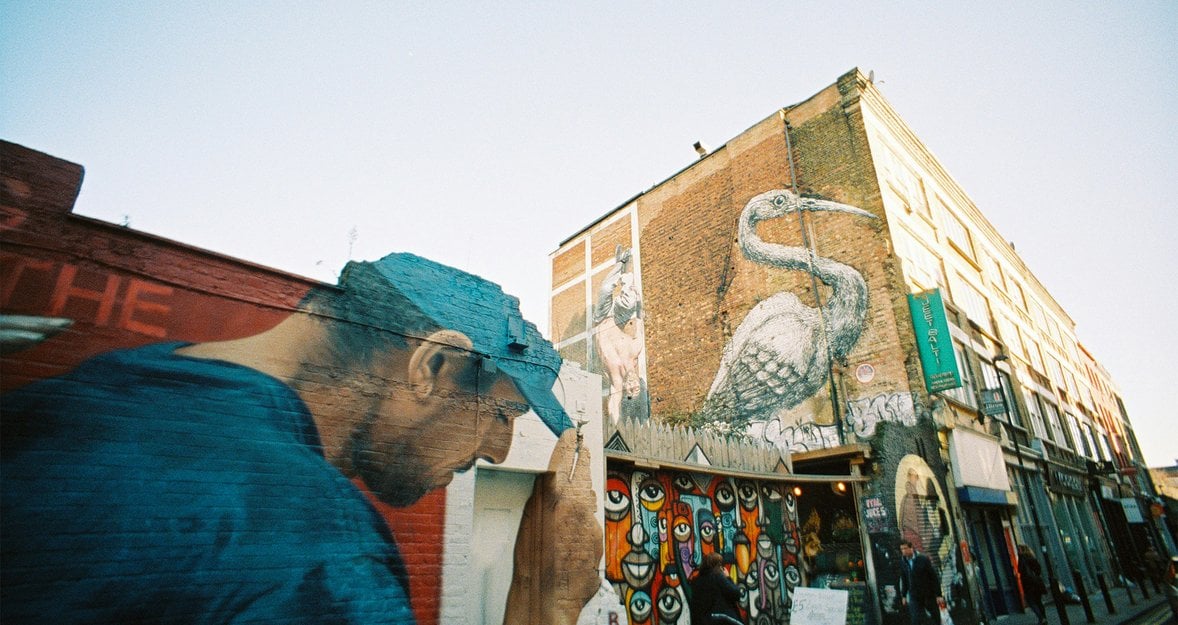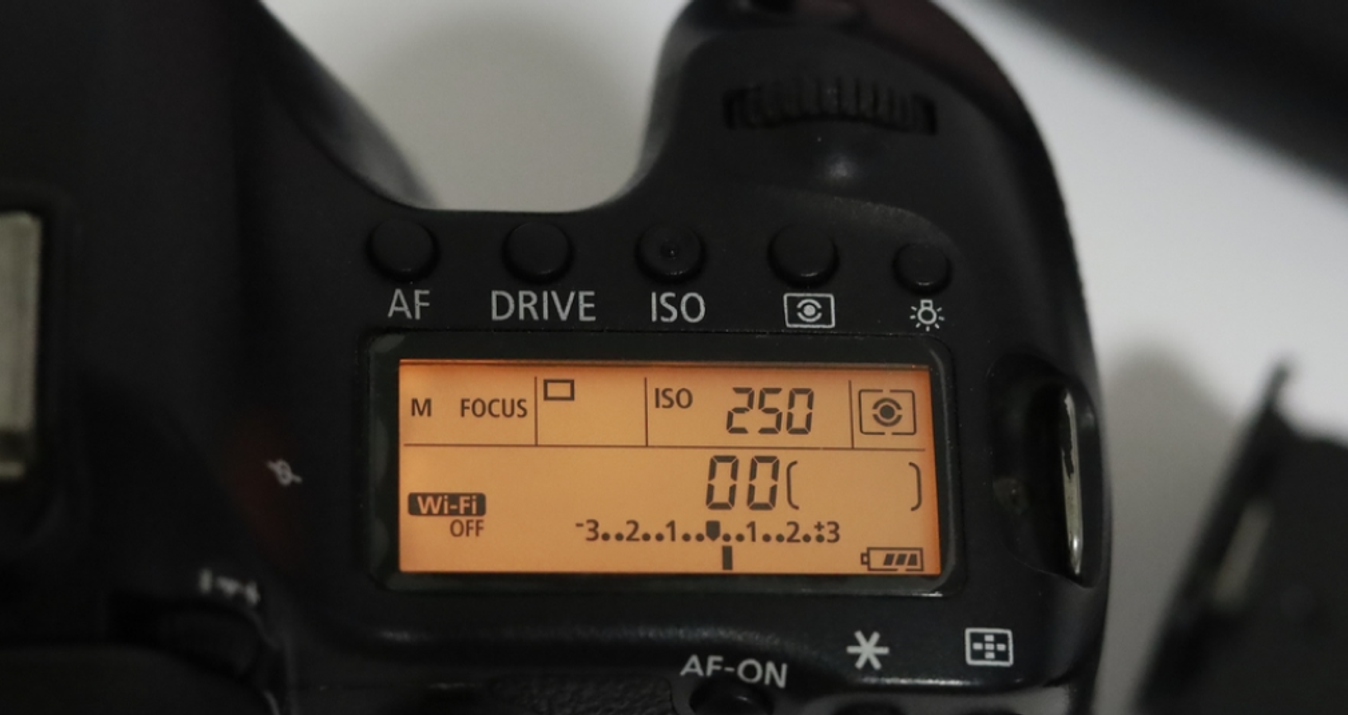Street Art Photography: Storytelling On Brick And Mortar
April 03, 2025

Street art adds color and character to cityscapes—and makes a bold subject for photography. Here's how to capture it creatively.
Street art surrounds us in major cities, covering walls, tunnels, and more. It’s so prevalent in urban landscapes that it has become synonymous with the environment. Artists may leave small tags or create enormous murals towering over the streets, adding beauty and intrigue to our daily commutes and city wanderings.
Street art also attracts photographers, especially those drawn to street photography, as it often appears naturally in their frames either adding impact to an image or enhancing its storytelling element.
In this article, we’ll explore how to capture street art effectively and discuss creative ways to incorporate it into your photography.
Why Street Art is Ideal for Storytelling
 Street art has roots tracing back to ancient times, with examples found on walls in places like Pompeii. However, modern street art as we know it began to emerge during the 1960s and ‘70s. It took shape in cities like Philadelphia and New York, where graffiti culture quickly grew in popularity, eventually spreading to urban landscapes worldwide.
Street art has roots tracing back to ancient times, with examples found on walls in places like Pompeii. However, modern street art as we know it began to emerge during the 1960s and ‘70s. It took shape in cities like Philadelphia and New York, where graffiti culture quickly grew in popularity, eventually spreading to urban landscapes worldwide.
Though often considered vandalism, street art has evolved, and today many cities commission artists to create murals that celebrate the cultures and communities of local neighbourhoods. Street art can take many forms such as activism, community identity, cultural expression, art and storytelling, all of which blend seamlessly into the urban environment. It’s now celebrated globally, with artists like Banksy achieving international recognition for their impact and commentary.
Photographers can benefit enormously from incorporating street art into their images. Since street art reflects the stories, struggles, and identities of the communities where it appears, photographers can capture more authentic representations of an area by including it in their work. Highlighting activist street art, for instance, can drive home pressing social issues and help tell the stories of oppressed or marginalised groups, offering a deeper narrative within each shot.
Techniques for Capturing Street Art
 Knowing how to approach capturing street art will help you create stunning shots that showcase the beauty of each piece while providing context for the environment it’s in.
Knowing how to approach capturing street art will help you create stunning shots that showcase the beauty of each piece while providing context for the environment it’s in.
Lighting
It’s a common belief that bright, sunny days offer the best lighting for colourful scenes like street art, but that’s not necessarily true. Direct sunlight can wash out colours, making them appear faded in your images. Harsh sunlight also creates glare if the mural has a reflective surface.
To capture vibrant colours, aim to shoot during the early morning or evening, when the softer, golden-hour light enhances colours naturally. Overcast days are ideal, too, as they provide even, diffused light that maintains the piece’s vibrancy without harsh shadows or glare.
Learn more: When Is The Best Time To Take Pictures Outside?
Perspective
Capturing street art isn’t simply about snapping a quick shot and moving on. It’s about adding your artistic touch to the artwork. Explore unique angles, shoot from above, get low to the ground, or find an unusual vantage point that adds depth and interest to your shot. An inventive perspective can transform a static mural into a dynamic visual story.
Composition
Composition is just as important in street art photography as in traditional street photography. The art itself is one part of your image; your composition brings it to life. Use techniques like leading lines, framing, and the rule of thirds to make the artwork stand out or blend into its surroundings in a way that’s visually engaging. Experimenting with these techniques can elevate your images and create impactful compositions.
Learn more: 10 Compositional Techniques to Improve Your Photographs
Details vs Full Piece
While capturing the entire mural gives a complete view of the artwork, taking a closer look can reveal fascinating details, textures, and even hidden elements that might otherwise go unnoticed. Spend time with each piece, get close, capture textures, and highlight intricate details, like the artist’s signature or specific brushstrokes. Combining wide shots with detailed close-ups creates a richer set of images that truly honour the art.
When shooting street art, take time to appreciate the piece’s details and explore unique ways to capture it. These techniques can help you create images that aren’t just records of the art but stories in their own right, breathing new life into the work.
Street Art and its Environment
 Street art is so deeply intertwined with the urban landscape that it offers a unique opportunity to showcase its environment in a way that enhances its impact. For example, if you’re capturing a mural that celebrates the culture of a city and its people, consider including a passerby from that community within the frame. This approach allows the mural and the photograph to work together, creating a powerful image that celebrates the essence of the city and its inhabitants. Another way to build context is by showcasing the community’s broader setting, with the artwork either as a focal point or subtly present in the background to communicate the story you wish to tell.
Street art is so deeply intertwined with the urban landscape that it offers a unique opportunity to showcase its environment in a way that enhances its impact. For example, if you’re capturing a mural that celebrates the culture of a city and its people, consider including a passerby from that community within the frame. This approach allows the mural and the photograph to work together, creating a powerful image that celebrates the essence of the city and its inhabitants. Another way to build context is by showcasing the community’s broader setting, with the artwork either as a focal point or subtly present in the background to communicate the story you wish to tell.
Although we’ll explore more creative ideas later, remember that street art is part of the city’s fabric and should be highlighted as such. Capture murals and street art alongside everything from modern architecture to urban decay, and use elements like street furniture or leading lines to guide the viewer’s eye and frame the artwork.
These techniques add depth and meaning to your image, providing viewers with a richer understanding and context about the community the artwork represents and perhaps even the culture it celebrates.
Exclusive Tools of Endless Possibilities in One AI Editor
Explore Now!10 Creative Ideas for Capturing Street Art
 There are many ways to incorporate street art into your photography. Think of street art as either the subject itself or as an element that adds context to your scene. For street photographers, each mural becomes an opportunity, inviting you to capture the perfect moment in an urban landscape. Here are our favourite ideas for creatively capturing street art:
There are many ways to incorporate street art into your photography. Think of street art as either the subject itself or as an element that adds context to your scene. For street photographers, each mural becomes an opportunity, inviting you to capture the perfect moment in an urban landscape. Here are our favourite ideas for creatively capturing street art:
Frame within a Frame: Use natural frames found in the city, like doorways, windows, or building arches, to frame the artwork. This technique draws attention to the mural in a unique way, giving it emphasis within the urban setting.
Portrait Shoots: Position models in front of street art to add an urban, authentic feel to portrait photography. For colourful murals, consider using models dressed in darker clothing to create contrast and prevent blending with the background. If the mural celebrates the community, try working with local people for an even more meaningful shot.
Shadows and Light: Leverage the natural play of light and shadows created by tall buildings in the city. This contrast can help frame the street art or create a striking effect when people walk through illuminated areas in front of a mural.
The Making Of: Document artists as they create their murals. Capturing the artist at work adds depth to the artwork itself and pays homage to their craft. Just remember to ask for the artist’s permission before photographing them in action.
Create a Series: Take a tour of your neighbourhood and locate as many street art pieces as possible. Creating a series highlights the diversity of street art in the area and allows you to tell a broader story about the city’s art culture.
Movement: Capture the constant flow of city life against a backdrop of street art. Experiment with passersby, cyclists, and vehicles by using faster shutter speeds to freeze the action or slower speeds to create a motion blur in your shot.
Show Scale: Large murals can be showcased effectively by including people or objects in the frame to highlight the artwork’s size. Position yourself at a distance to capture the mural fully, and look for opportunities where someone interacts with or gazes up at the art to add a sense of awe and scale.
Colour Blocking: Colour blocking involves pairing two colours together for a visually striking effect. Look for elements in the environment that either match or contrast with the street art, bringing a cohesive look to your image.
Artist Showcase: Work closely with an artist to capture them with their work, offering a personal look at their creations. Follow the artist to different sites, document their creative process, and capture interactions with locals. Including quotes from the artist about their work and inspirations can add depth to the photos.
Contextualise with the Environment: Street art is intertwined with its surroundings, so show its connection to the city by capturing wide shots that include nearby architecture, businesses, and people. For a series, include shots of the local culture, street vendors, small businesses, and community members to provide a complete picture of the artwork’s environment.
Once you’re out there with your camera, new ideas for capturing street art will start to flow. Celebrate this art form by working with the artists or highlighting the culture and community around it. Consider incorporating street photography techniques like natural framing to create a powerful and engaging composition.
Learn more: How We Edit for Street Photography (using Luminar Neo)
Respecting the Artist
Whenever possible, credit the artist behind the work you’re photographing. Street artists often include their signature, or “tag,” somewhere on the piece. Just as photographers feel the sting of seeing their work shared without proper credit, street artists face the same issue.
By acknowledging the artist, you’re not only showing respect for their creativity but also supporting their visibility and profile. This small gesture can go a long way in building a community of respect between photographers and artists.
The Bottom Line
Capturing street art is a powerful way to honour the community and culture of a city. For many street photographers, this art form has already become a natural part of their work, blending seamlessly with the urban environment. By intentionally focusing on street art and experimenting with how to capture it, you’ll find even more opportunities for storytelling in your photography.
Consider what the piece conveys, whether it's activism, a cultural tribute, or an abstract expression, and use your camera to add context and depth to that story. By including the environment, you can reveal the connection between the artwork and the surrounding community, creating a richer, more meaningful image.
Exploring and working with street art is a fun and rewarding experience, so get out there, explore the hidden gems in your city, and start shooting. Enjoy the journey!





